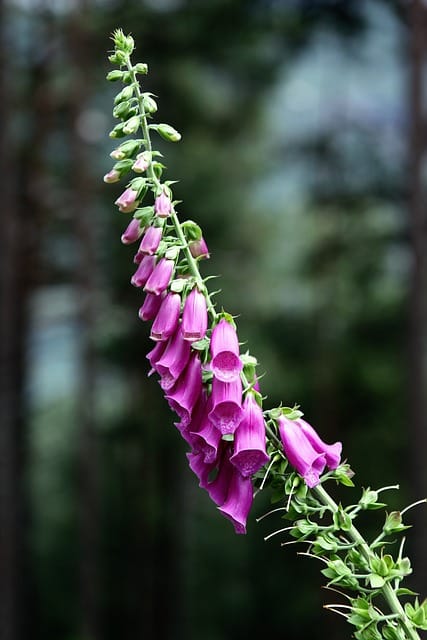How to grow Foxgloves
Welcome to our guide on how to grow the beautiful and delicate foxgloves flower

In this article:
- Introduction
- What are Foxgloves?
- Choosing the Right Variety
- Soil and Location Requirements
- Planting and Propagation
- Watering and Fertilization
- Sunlight and Temperature Needs
- Pruning and Maintenance Tips
- Dealing with Common Pests and Diseases
- Harvesting and Using Foxgloves
- Winter Care and Protection
- Conclusion
Introduction
Welcome to our guide on how to grow the beautiful and delicate foxgloves flower. Foxgloves, also known as digitalis, are a popular choice among gardeners for their tall spikes of tubular flowers in various vibrant colors. In this article, we will cover all the essential information you need to successfully cultivate foxgloves in your garden.
What are Foxgloves?
Foxgloves are biennial or perennial flowering plants that belong to the genus Digitalis. They are native to Europe, but now grown in various parts of the world. Foxgloves produce tall spikes that can reach heights up to 6 feet, adorned with stunning flowers that attract bees, butterflies, and other pollinators.
Choosing the Right Variety
When selecting foxgloves, consider factors such as height, flower color, and bloom time. Common varieties include Digitalis purpurea (common foxglove), Digitalis lutea (straw foxglove), and Digitalis ferruginea (rusty foxglove). Choose a variety that suits your garden's aesthetic and climate conditions.
Soil and Location Requirements
Foxgloves thrive in well-draining soil that is rich in organic matter. They prefer slightly acidic to neutral soil with a pH range of 6.0 to 7.0. Additionally, foxgloves prefer partially shaded areas, although some varieties can tolerate full sun. Ensure the location provides some protection from strong winds.
Planting and Propagation
Start growing foxgloves from seeds indoors about 8 to 10 weeks before the last frost date. Sow the seeds on the soil's surface and gently press them in. Transplant the seedlings into your garden after the danger of frost has passed, spacing them about 18 inches apart. Alternatively, you can sow the seeds directly into the garden in early spring or late summer.
Watering and Fertilization
Keep the soil evenly moist but not waterlogged. Foxgloves require regular watering, especially during dry spells. However, make sure the soil drains well to prevent root rot. Apply a balanced fertilizer in early spring and then again after the first bloom to promote healthy growth.
Sunlight and Temperature Needs
Generally, foxgloves prefer partial shade to full sun, but some varieties can tolerate more shade. They can thrive in cool climates and are hardy in USDA zones 4 to 10. Adequate sunlight and moderate temperatures contribute to lush foliage and abundant blooms.
Pruning and Maintenance Tips
Remove faded flowers to encourage the production of new blooms and prevent self-seeding. After the flowers are spent, cut back the entire flower stalk to the base of the plant. Remove any damaged or dead leaves throughout the growing season and perform a thorough cleanup at the end of each season to prevent overwintering diseases.
Dealing with Common Pests and Diseases
Foxgloves are relatively resistant to pests and diseases. However, they can sometimes be affected by aphids, slugs, and snails. Use organic solutions or insecticidal soaps to control aphids. For slugs and snails, place beer traps or use copper strips around the plants. Keep an eye out for signs of fungal diseases, such as leaf spot or powdery mildew, and promptly remove affected leaves.
Harvesting and Using Foxgloves
The foxgloves' flowers are primarily grown for their ornamental value. Cut the flower stalks when they are at their peak bloom for stunning floral arrangements. Remember to wear gloves when handling foxgloves, as their leaves and flowers can be toxic if ingested.
Winter Care and Protection
In colder climates, apply a layer of mulch around the base of the plant to provide insulation during the winter months. This will help protect the roots from extreme temperatures. Additionally, cut back the foliage and remove any debris to minimize the risk of fungal diseases.
Conclusion
Growing foxgloves can add a touch of elegance to your garden. With the right soil, location, and care, you can enjoy the glorious spikes of foxglove flowers year after year. Remember to choose the right variety for your garden, provide adequate watering and fertilization, and protect the plants from potential pests and diseases. By following these tips, you'll be well on your way to a beautiful foxgloves-filled garden.
